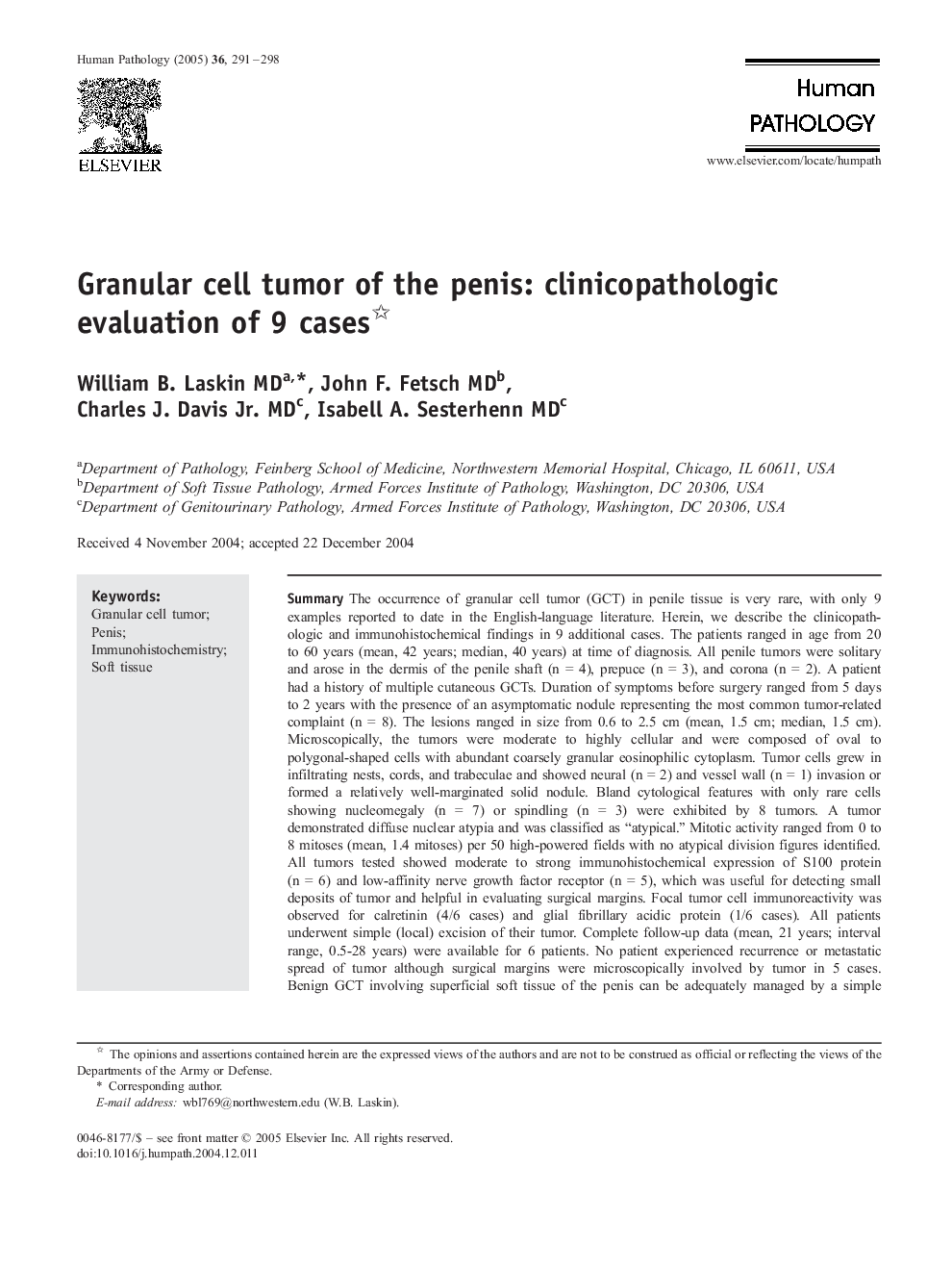| Article ID | Journal | Published Year | Pages | File Type |
|---|---|---|---|---|
| 9365489 | Human Pathology | 2005 | 8 Pages |
Abstract
The occurrence of granular cell tumor (GCT) in penile tissue is very rare, with only 9 examples reported to date in the English-language literature. Herein, we describe the clinicopathologic and immunohistochemical findings in 9 additional cases. The patients ranged in age from 20 to 60 years (mean, 42 years; median, 40 years) at time of diagnosis. All penile tumors were solitary and arose in the dermis of the penile shaft (n = 4), prepuce (n = 3), and corona (n = 2). A patient had a history of multiple cutaneous GCTs. Duration of symptoms before surgery ranged from 5 days to 2 years with the presence of an asymptomatic nodule representing the most common tumor-related complaint (n = 8). The lesions ranged in size from 0.6 to 2.5 cm (mean, 1.5 cm; median, 1.5 cm). Microscopically, the tumors were moderate to highly cellular and were composed of oval to polygonal-shaped cells with abundant coarsely granular eosinophilic cytoplasm. Tumor cells grew in infiltrating nests, cords, and trabeculae and showed neural (n = 2) and vessel wall (n = 1) invasion or formed a relatively well-marginated solid nodule. Bland cytological features with only rare cells showing nucleomegaly (n = 7) or spindling (n = 3) were exhibited by 8 tumors. A tumor demonstrated diffuse nuclear atypia and was classified as “atypical.” Mitotic activity ranged from 0 to 8 mitoses (mean, 1.4 mitoses) per 50 high-powered fields with no atypical division figures identified. All tumors tested showed moderate to strong immunohistochemical expression of S100 protein (n = 6) and low-affinity nerve growth factor receptor (n = 5), which was useful for detecting small deposits of tumor and helpful in evaluating surgical margins. Focal tumor cell immunoreactivity was observed for calretinin (4/6 cases) and glial fibrillary acidic protein (1/6 cases). All patients underwent simple (local) excision of their tumor. Complete follow-up data (mean, 21 years; interval range, 0.5-28 years) were available for 6 patients. No patient experienced recurrence or metastatic spread of tumor although surgical margins were microscopically involved by tumor in 5 cases. Benign GCT involving superficial soft tissue of the penis can be adequately managed by a simple excision. Patients with microscopically involved surgical margins can be clinically followed without immediate additional surgery.
Related Topics
Health Sciences
Medicine and Dentistry
Pathology and Medical Technology
Authors
William B. MD, John F. MD, Charles J. MD, Isabell A. MD,
